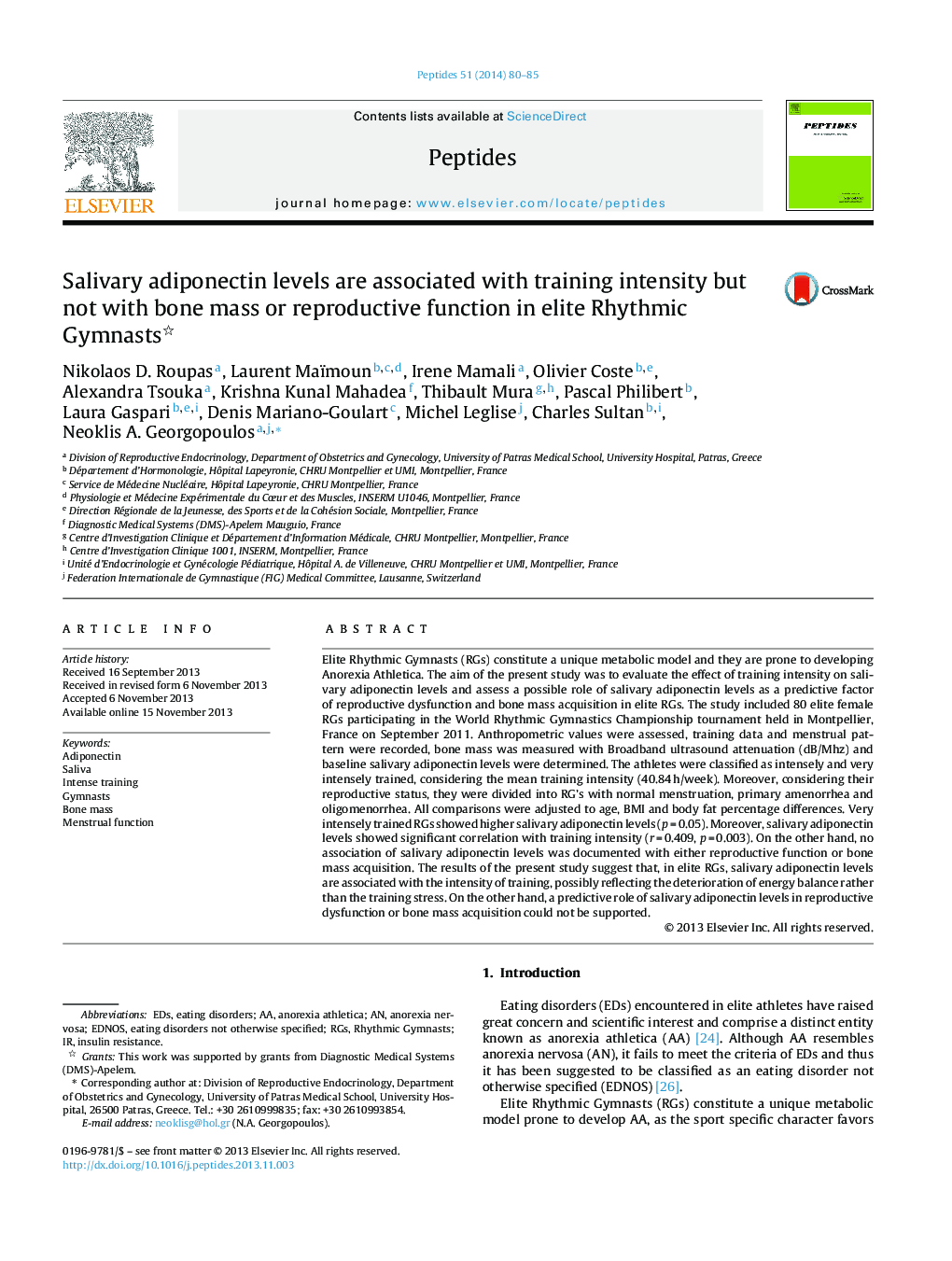| کد مقاله | کد نشریه | سال انتشار | مقاله انگلیسی | نسخه تمام متن |
|---|---|---|---|---|
| 8348500 | 1541728 | 2014 | 6 صفحه PDF | دانلود رایگان |
عنوان انگلیسی مقاله ISI
Salivary adiponectin levels are associated with training intensity but not with bone mass or reproductive function in elite Rhythmic Gymnasts
ترجمه فارسی عنوان
سطوح آدیپونکتین بزاق با شدت تمرین ارتباط دارد، اما با توده استخوانی یا عملکرد باروری در ژیمناستهای ریتمیک نخبه
دانلود مقاله + سفارش ترجمه
دانلود مقاله ISI انگلیسی
رایگان برای ایرانیان
کلمات کلیدی
EDSRGSEDNOSadiponectin - آدیپونکتینEating disorders - اختلالات خوردنEating disorders not otherwise specified - اختلالات خوردن در غیر اینصورت مشخص نیستSaliva - بزاق Anorexia nervosa - بیاشتهایی عصبیBone mass - توده استخوانیmenstrual function - عملکرد قاعدگیInsulin resistance - مقاومت به انسولینgymnasts - ژیمناستیک
موضوعات مرتبط
علوم زیستی و بیوفناوری
بیوشیمی، ژنتیک و زیست شناسی مولکولی
زیست شیمی
چکیده انگلیسی
Elite Rhythmic Gymnasts (RGs) constitute a unique metabolic model and they are prone to developing Anorexia Athletica. The aim of the present study was to evaluate the effect of training intensity on salivary adiponectin levels and assess a possible role of salivary adiponectin levels as a predictive factor of reproductive dysfunction and bone mass acquisition in elite RGs. The study included 80 elite female RGs participating in the World Rhythmic Gymnastics Championship tournament held in Montpellier, France on September 2011. Anthropometric values were assessed, training data and menstrual pattern were recorded, bone mass was measured with Broadband ultrasound attenuation (dB/Mhz) and baseline salivary adiponectin levels were determined. The athletes were classified as intensely and very intensely trained, considering the mean training intensity (40.84 h/week). Moreover, considering their reproductive status, they were divided into RG's with normal menstruation, primary amenorrhea and oligomenorrhea. All comparisons were adjusted to age, BMI and body fat percentage differences. Very intensely trained RGs showed higher salivary adiponectin levels (p = 0.05). Moreover, salivary adiponectin levels showed significant correlation with training intensity (r = 0.409, p = 0.003). On the other hand, no association of salivary adiponectin levels was documented with either reproductive function or bone mass acquisition. The results of the present study suggest that, in elite RGs, salivary adiponectin levels are associated with the intensity of training, possibly reflecting the deterioration of energy balance rather than the training stress. On the other hand, a predictive role of salivary adiponectin levels in reproductive dysfunction or bone mass acquisition could not be supported.
ناشر
Database: Elsevier - ScienceDirect (ساینس دایرکت)
Journal: Peptides - Volume 51, January 2014, Pages 80-85
Journal: Peptides - Volume 51, January 2014, Pages 80-85
نویسندگان
Nikolaos D. Roupas, Laurent Maïmoun, Irene Mamali, Olivier Coste, Alexandra Tsouka, Krishna Kunal Mahadea, Thibault Mura, Pascal Philibert, Laura Gaspari, Denis Mariano-Goulart, Michel Leglise, Charles Sultan, Neoklis A. Georgopoulos,
